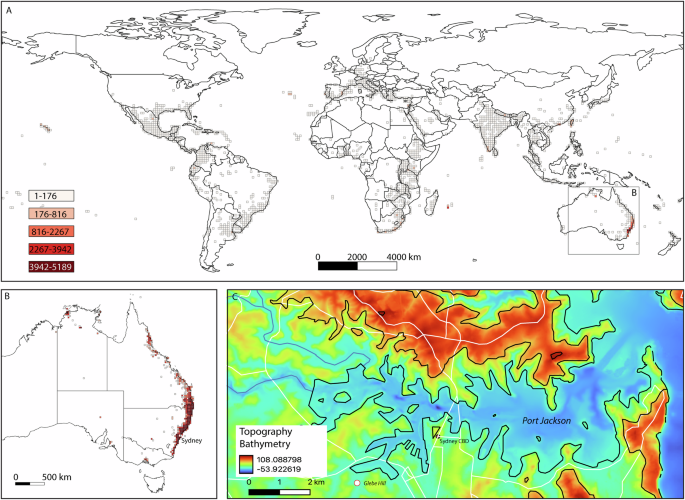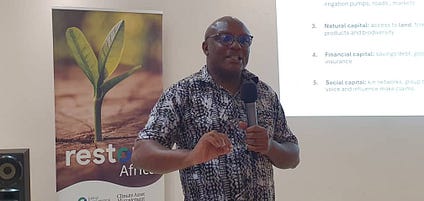Report on Laura Da’s Poetry Collection “Severalty” and its Alignment with Sustainable Development Goals
Introduction and Background
This report analyzes the poetry collection “Severalty” by Laura Da’, an enrolled member of the Eastern Shawnee of Oklahoma and an alumna of the University of Washington and the Institute of American Indian Arts. The collection centers on the historical and ongoing impacts of the Dawes Severalty Act of 1887, federal legislation that divided communal tribal lands into individual allotments. This policy systematically dismantled the political, cultural, and territorial integrity of Indigenous communities, resulting in the loss of 90 million acres of tribal land. Da’s work serves as a literary testament to the consequences of this act, exploring themes of dispossession, trauma, and resilience.
Analysis of “Severalty” through the Lens of Sustainable Development Goals (SDGs)
The thematic content of “Severalty” directly engages with several key United Nations Sustainable Development Goals, particularly those concerning justice, equality, health, and the preservation of culture.
SDG 10: Reduced Inequalities
The collection provides a critical examination of historical policies that have created and perpetuated systemic inequalities for Indigenous peoples, a core concern of SDG 10.
- Historical Dispossession: The Dawes Act is presented as a primary driver of inequality, reducing tribal landmass and facilitating the transfer of wealth and resources away from Indigenous communities.
- Intergenerational Impact: Da’s poetry illustrates how the consequences of this legislation are not confined to the past but continue to affect subsequent generations, creating an “impassable road from ancestors to progeny.”
- Cultural and Political Disenfranchisement: The act’s objective to dismantle tribal cohesion is shown to be a direct assault on the political and social structures that support Indigenous self-determination, thereby deepening inequalities.
SDG 16: Peace, Justice and Strong Institutions
“Severalty” addresses the profound and lasting injustices stemming from the failure of state institutions to protect the rights of Indigenous peoples, aligning with the objectives of SDG 16.
- Legislative Injustice: The Dawes Act is framed as a tool of institutional injustice, used to legally sanction the seizure of land and the disruption of tribal governance.
- Reclamation as Justice: The act of writing and witnessing, as Da’ describes her work, is a form of seeking justice by reclaiming erased histories and documenting the lived present of communities affected by these policies.
- Trauma from Institutional Failures: The collection links the trauma experienced in government-facilitated boarding schools directly to the legislative framework of the allotment era, highlighting a systemic failure to provide safe and just institutions for Indigenous children.
SDG 3: Good Health and Well-being
A significant portion of the collection explores the connection between historical trauma and contemporary health outcomes, reflecting the holistic approach to well-being advocated by SDG 3.
- Intergenerational Trauma and Health: The poems explicitly link the residues of historical trauma to present-day Indigenous ecosystems and individual health, including autoimmune illness and other morbidities.
- The Body as a Contested Landscape: Da’ writes of personal health crises, including a kidney transplant and cancer, using the body as a metaphor for a “mined landscape,” thereby connecting personal suffering to the historical exploitation of Indigenous lands and peoples.
- Healing and Wholeness: The poet’s personal healing journey is presented as a search for integrity and wholeness amidst rupture, suggesting that well-being is intrinsically linked to acknowledging and processing states of separation and trauma.
SDG 4: Quality Education & SDG 11: Sustainable Communities
The collection critiques historical educational models that sought to erase Indigenous culture while simultaneously acting as a vehicle for cultural preservation, contributing to the aims of SDG 4 (inclusive education) and SDG 11 (safeguarding cultural heritage).
- Critique of Assimilationist Education: The traumatic legacy of boarding schools, which aimed to sever cultural ties, is identified as a direct consequence of the era’s policies, representing a failure of equitable and culturally sensitive education.
- Poetry as Cultural Preservation: Da’s work, influenced by her time at the Institute of American Indian Arts, functions to reclaim and transmit cultural knowledge, particularly the Shawnee linguistic and philosophical worldview, which offers an alternative to Western temporal concepts.
- Land, Culture, and Community: By focusing on the fragmentation of communal lands, the book underscores the principle that sustainable communities (SDG 11) are dependent on their connection to land and the preservation of the cultural heritage embedded within it.
Conclusion: Witness, Reclamation, and Future Directions
Laura Da’s “Severalty” is a profound literary work that functions as both a historical witness and an act of cultural reclamation. By documenting the material and psychological conditions created by the Dawes Act, the collection illuminates the deep connections between historical injustice, inequality, health, and cultural continuity. The work underscores the importance of addressing past wrongs to achieve the Sustainable Development Goals, demonstrating that justice and well-being for Indigenous communities are predicated on the recognition of their history, the restoration of their rights, and the preservation of their sacred relationship to land and culture.
Analysis of Sustainable Development Goals in the Article
1. Which SDGs are addressed or connected to the issues highlighted in the article?
-
SDG 10: Reduced Inequalities
- The article is centered on the Dawes Severalty Act of 1887, a policy that systemically created and exacerbated inequalities for Indigenous peoples. It details how the law was “used to dismantle the political, cultural and territorial cohesion of tribal communities,” leading to the loss of land and autonomy, which are core issues of inequality.
-
SDG 16: Peace, Justice and Strong Institutions
- The article discusses a piece of “federal legislation” (the Dawes Act) that represents an institutional failure to provide justice. The law led to “dispossession: stolen land, stolen children and stolen memories,” highlighting a profound injustice against tribal communities that continues to have lasting impacts.
-
SDG 3: Good Health and Well-being
- The article explicitly connects historical injustices to current health crises. It mentions “intergenerational trauma and its residues, which affect present-day Indigenous ecosystems and experiences” and details health issues like “hospital stays, surgeries, morbidities, autoimmune illness,” linking them to the historical trauma of dispossession.
-
SDG 4: Quality Education
- The article points to the negative role of education as a tool for assimilation and trauma, referencing the “boarding school experiences that traumatized my grandparents and great aunts and uncles.” This connects to the need for inclusive and culturally appropriate education that respects Indigenous knowledge, which is contrasted with the “loss of maternal knowledge” mentioned in the text.
-
SDG 11: Sustainable Cities and Communities
- The core purpose of the Dawes Act was to break up “communal reservation lands” and dismantle “tribal communities.” The article’s focus on reclaiming cultural heritage and memory relates to the goal of safeguarding the cultural heritage of communities.
2. What specific targets under those SDGs can be identified based on the article’s content?
-
SDG 10: Reduced Inequalities
- Target 10.2: “By 2030, empower and promote the social, economic and political inclusion of all, irrespective of… ethnicity, origin… or other status.” The article discusses the historical disempowerment and exclusion of Indigenous peoples through the Dawes Act, which dismantled their political and social structures.
- Target 10.3: “Ensure equal opportunity and reduce inequalities of outcome, including by eliminating discriminatory laws, policies and practices…” The Dawes Act is a prime example of a discriminatory law whose negative outcomes—the loss of 90 million acres—are still felt today.
-
SDG 16: Peace, Justice and Strong Institutions
- Target 16.3: “Promote the rule of law at the national and international levels and ensure equal access to justice for all.” The article illustrates a historical failure to provide justice for Indigenous peoples through federal law.
- Target 16.b: “Promote and enforce non-discriminatory laws and policies for sustainable development.” The article serves as a case study on the long-term, multi-generational damage caused by a discriminatory law.
-
SDG 3: Good Health and Well-being
- Target 3.4: “By 2030, reduce by one third premature mortality from non-communicable diseases through prevention and treatment and promote mental health and well-being.” The article’s mention of “intergenerational trauma,” “morbidities,” and “autoimmune illness” directly relates to the need to address both mental and physical health challenges rooted in historical injustices.
-
SDG 4: Quality Education
- Target 4.5: “By 2030, ensure equal access to all levels of education… for… indigenous peoples…” The article highlights the opposite: how boarding schools were used to inflict trauma, demonstrating a historical lack of access to safe and culturally relevant education.
-
SDG 11: Sustainable Cities and Communities
- Target 11.4: “Strengthen efforts to protect and safeguard the world’s cultural and natural heritage.” The article details the attack on the cultural heritage of tribal communities and the loss of their natural heritage (land). The poetry itself is presented as an act of reclaiming and safeguarding this heritage.
3. Are there any indicators mentioned or implied in the article that can be used to measure progress towards the identified targets?
-
Land Tenure and Dispossession Data
- The article provides a specific, quantifiable indicator of the impact of the Dawes Act: “90 million acres away from tribes.” This figure serves as a direct measure of the inequality of outcome (Target 10.3) and the loss of natural heritage (Target 11.4).
-
Health Disparities
- The article implies the need for indicators by mentioning specific health issues: “intergenerational trauma,” “morbidities,” and “autoimmune illness.” Measuring the prevalence of these conditions within Indigenous communities compared to the general population would be an indicator for Target 3.4.
-
Impact of Discriminatory Legislation
- The existence of the Dawes Act and its documented effects—”dismantle the political, cultural and territorial cohesion”—serve as a qualitative indicator of the failure to ensure justice and enforce non-discriminatory laws (Targets 16.3 and 16.b).
-
Access to Culturally Relevant Education
- The mention of “boarding school experiences that traumatized” generations and the “loss of maternal knowledge” are qualitative indicators of a failure to provide quality education (Target 4.5). Progress could be measured by the establishment and support of educational systems that preserve and transmit Indigenous knowledge.
Summary Table of SDGs, Targets, and Indicators
4. Create a table with three columns titled ‘SDGs, Targets and Indicators” to present the findings from analyzing the article. In this table, list the Sustainable Development Goals (SDGs), their corresponding targets, and the specific indicators identified in the article.
| SDGs | Targets | Indicators |
|---|---|---|
| SDG 10: Reduced Inequalities |
|
The historical dispossession of “90 million acres” from tribes as a measure of inequality of outcome resulting from discriminatory policies. |
| SDG 16: Peace, Justice and Strong Institutions |
|
The existence and lasting impact of the Dawes Severalty Act of 1887 as a discriminatory federal law that caused injustice (“stolen land, stolen children”). |
| SDG 3: Good Health and Well-being |
|
The mention of “intergenerational trauma,” “morbidities,” and “autoimmune illness” as health consequences affecting Indigenous communities. |
| SDG 4: Quality Education |
|
The “boarding school experiences that traumatized” generations and the “loss of maternal knowledge” as indicators of a lack of safe, inclusive, and culturally relevant education. |
| SDG 11: Sustainable Cities and Communities |
|
The dismantling of “tribal communities” and their “cultural and territorial cohesion” as an indicator of the loss of cultural heritage. |
Source: magazine.washington.edu






